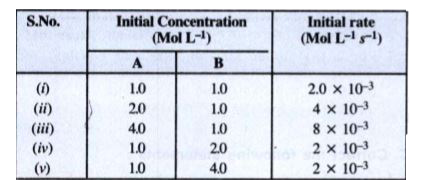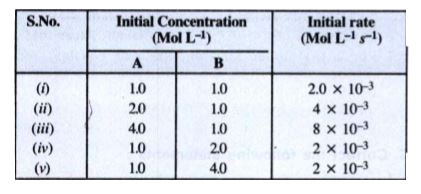From the three energy profile diagrams A,B and C, find out which of the above irreversible reactions gives maximum yield within a given period of time ? Justify. [Consider that the initial concentration of the reactants and temperature is same for all the reactions. ]
![From the three energy profile diagrams A,B and C, find out which of the above irreversible reactions gives maximum yield within a given period of time ? Justify. [Consider that the initial concentration of the reactants and temperature is same for all the reactions. ]](https://d10lpgp6xz60nq.cloudfront.net/physics_images/PS_CHM_X_C06_E05_015_Q01.png)
From the graphs of A, B and C , we can compare the activation energy and energy of respective products. The product formed in graph A has the least energy and is most stable the activation energy of the reaction in graph C is the least . The yield of the product is more for that reaction that involves least activation energy as most of the reacting molecules undergo effective collisions and hence form a product. Thus it can be concluded that the yield of product in graph C is maximum.
Topper's Solved these Questions
- CHEMICAL KINETICS AND EQUILIBRIUMBOOK - PEARSON IIT JEE FOUNDATIONCHAPTER - CHEMICAL KINETICS AND EQUILIBRIUMEXERCISE - Level 3
10 Videos
- CHEMICAL KINETICS AND EQUILIBRIUMBOOK - PEARSON IIT JEE FOUNDATIONCHAPTER - CHEMICAL KINETICS AND EQUILIBRIUMEXERCISE - Level 1
43 Videos
- ATOMIC STRUCTURE BOOK - PEARSON IIT JEE FOUNDATIONCHAPTER - ATOMIC STRUCTURE EXERCISE - LEVEL-3
8 Videos
- CHEMICAL BONDING BOOK - PEARSON IIT JEE FOUNDATIONCHAPTER - CHEMICAL BONDING EXERCISE - Level 3
10 Videos
Similar Questions
Consider the reaction, A+B→C+D.
The initial rate for different initial concentrations of the reactants are given below :

Calculate the rate constant.
View SolutionConsider the reaction, A+B→C+D.
The initial rate for different initial concentrations of the reactants are given below :

Calculate the rate constant.
View Solution
Knowledge Check
Which of the given reaction conditions will give maximum yields of C2H5Cl ?
AC2H6(excess)+Cl2UV light−−−−→BC2H6+Cl2dark−−−−−−−−−−→room temperatureCC2H6+Cl2(excess)UV light−−−−→DC2H6+Cl2UV light−−−−→
Consider the reaction, A+B→C+D.
The initial rate for different initial concentrations of the reactants are given below :

Calculate the rate constant.
View SolutionConsider the reaction, A+B→C+D.
The initial rate for different initial concentrations of the reactants are given below :

What is the overall order ?
View SolutionConsider the reaction, A+B→C+D.
The initial rate for different initial concentrations of the reactants are given below :

What is the overall order ?
View SolutionConsider the reaction, A+B→C+D.
The initial rate for different initial concentrations of the reactants are given below :

What is the overall order ?
View SolutionConsider the reaction, A+B→C+D.
The initial rate for different initial concentrations of the reactants are given below :

Write the rate law equation.
View SolutionConsider the reaction, A+B→C+D.
The initial rate for different initial concentrations of the reactants are given below :

Write the rate law equation.
View SolutionConsider the reaction, A+B→C+D.
The initial rate for different initial concentrations of the reactants are given below :

Write the rate law equation.
View Solution
